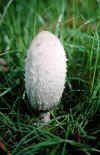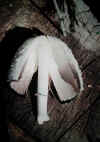| 10-24-05
The Department of Natural Resources (DNR) and partnering organizations
have all but sewed up the acquisition of the long-sought, 8,000-plus acres
of Goose Pond on White River’s west fork in Greene County. With the
potential for being the undisputed best wetland area of the state, Goose
Pond has been the apple of the DNR’s eyes for many years.
Unfortunately, past efforts to acquire this mecca for migrating birds--including
ducks
and geese--have been botched, or otherwise torpedoed by frugal forces
in the
Statehouse.
Soon after taking command of the DNR last February, Kyle Hupfer indicated
that the acquisition of Goose Pond would be a high-priority item on his
agenda. And, although some of his early acts have been questioned by conservationists
and outdoors types, the purchase of this natural wetland will be a huge
feather in his cap.
Publicity on the workings of the acquisition scenario has been low key
(probably for fear that the works could be gummed up again). But aside
from final details, it is a done deal, and those most closely involved
will celebrate their success with a ceremony on the property November 8.
How the scenario will play out is not yet known, but the DNR (presumably
its Division of Fish and Wildlife) will manage the area that embraces some
7,100 acres of wetlands and 1,100 acres of cropland. This will include
some 4,000 acres of shallow water (not deep enough to hold fish), and 1,000
acres of prairie that is in place now.
The U.S. Department of Agriculture’s Wetland Reserve Program is coughing
up a tad more than $7-million, and several organizations of conservationists
and sporting types (including Ducks Unlimited, The Indiana Nature Conservancy,
and the Indiana Department of Transportation) will round out the financial
package. Total price of the purchase is not yet known.
Although parts of the wetland will be open to waterfowl hunting, county
government expects greater fiscal windfalls to come from bird watchers
and nature lovers.
SHAGGYMANE HEAVEN
Last Thursday’s plunging air temperatures and cold rains touched off
an explosion of shaggymane mushrooms (Coprinus comatus), and this
has brought many questions about this delicacy.
Many would-be consumers of the shaggymane want to know first if it really
is an edible fungi.
It is quite edible. And, and I might add, (though I could be tarred,
feathered, and ridden out of Hoosierland on a three-cornered rail for even
fostering such absurd thoughts: your taste buds may put shags above all
fungi, including . . . gasp . . . morels.)
Secondly, folks want to know how to recognize shags, and how to process
(including cooking) them.
The shag will be recognized as a white, somewhat egg-shaped thing with
small flecks of white or tan dotting the white surface. Like numerous
other fungi, the outer perimeter of the cap is attached to an equally white
stem.
Soon after the outer perimeter of the caps break away from the stem,
this outer perimeter of the cap starts turning black. Eventually the entire
cap will turn into a black, inky mess sitting on top of the stem. If a
shag reaches parasol shape it is over the hill in terms of edibility.
It is best to pick shags before the cap has broken away from the stem.
But even if the cap is free of the stem and showing some black, the remaining
white part of the cap still is edible and very tasty. Just cut away the
black part and save the rest.
I also cut away and discard the top part of the cap (where the stem
is attached). It is too tough to be palatable. Both cuts are made across
the mushroom.
My unscientific experiments indicate that since the black starts developing
at the outer perimeter of the caps, if this is cut away the remainder of
the cap can be kept immersed in water at frig temperature for a day, even
longer. Keeping the caps under water seems to thwart decomposition by eliminating
exposure to air. The trick is in keeping the pieces below the surface of
the water.
I have kept shag caps white for more than two months. However,
water tends to make them soggy over a lengthy period.
How to cook shags? Just like morels. I dip them in a mix of egg and
milk, roll them in a 50-50 mix of finely rolled cracker crumbs and flour,
and fry them to golden brown on both sides in olive oil, butter, bacon
fryings, or a mix of these cooking agents.
Frying shags, or any other mushroom, requires “stand there” attention.
Brown the first side and turn them. Brown the second side and get them
out of the skillet.
Click
on thumbnail image for enlarged view.

|

|
| This picture of a five-inch shaggymane illustrates
how the outer (lower) perimeter of the cap starts turning black soon after
the cap breaks away from the stem. |
This cutaway picture illustrates how the stem
is attached to the cap and how the black portion of the cap develops. |
|

